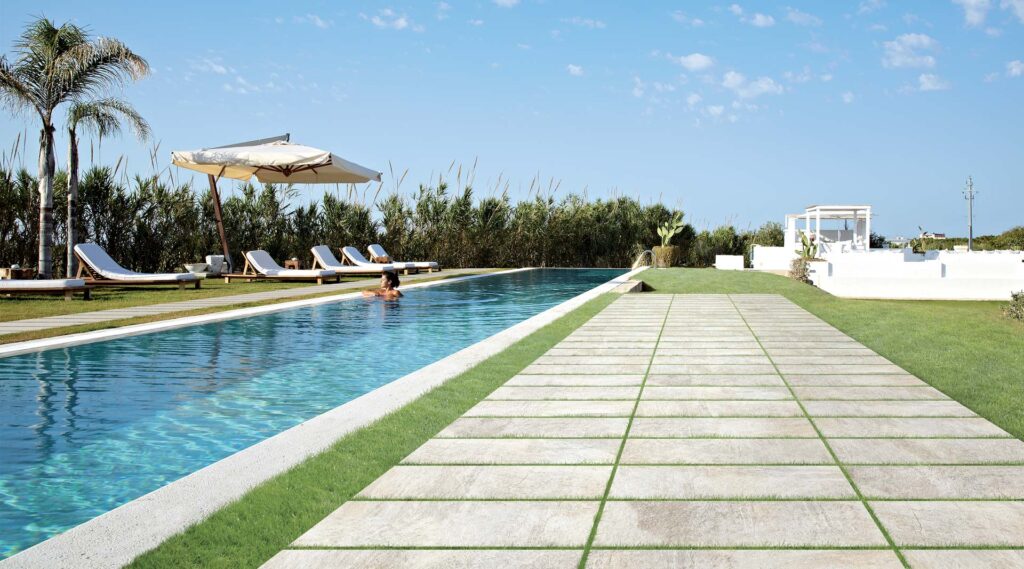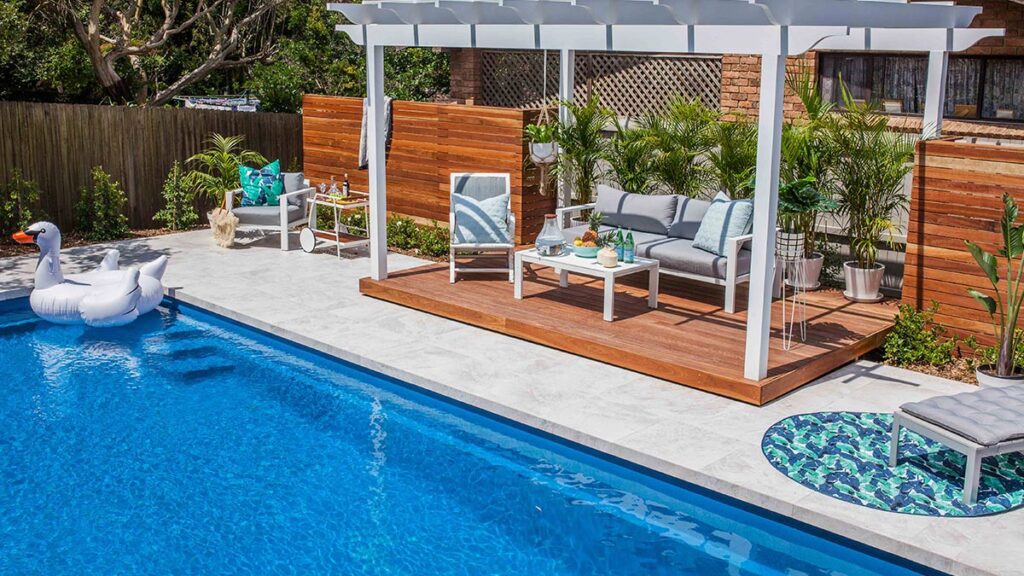These cleaning tips will keep your pool tiles looking new
By Amelie Falconer / April 21, 2022 / No Comments / Pool Tiles
Pool tiles are an excellent method to enhance an area, but they must be cleaned on a regular basis. Determine the material composition of your tiles (porcelain, wood, composite, or solid stone). Dust or dry mop dirt and debris off the pool tiles before cleaning them with a light soap or vinegar solution. You’ll need to do a comprehensive cleaning of the pool tiles once or twice a year to avoid the growth of mold and mildew. Always avoid abrasive cleaners and chemicals while maintaining the appearance of the pool tiles.
Sweep the pool tiles daily
Sweep your porcelain pool tiles at least once a day. Utilize a soft, natural bristle brush or connect a vacuum attachment to the broom to suction up the dirt. Regular sweeping helps keep your pool tiles free of grime and stains.
If your porcelain pool tiles lead up to your home’s foyer, you’ll want to sweep them more often. This will keep dirt out of your home.
Once a week, clean the pool tiles with clean water.
You should clean your outdoor porcelain tiles with warm water every few days (or whenever you see a buildup of dirt or grime). Mop the pool tiles with a pail of clean, warm water. This will eliminate the majority of grime and maintain the tiles’ appearance.
Purge the mop of the majority of the water. You do not want excessive moisture to collect on the tiles.
Once a month, thoroughly clean the tiles.
Fill a big bucket with 2 gallons (7.6 L) of clean water at least once a month. Add 14 cup (59 mL) white vinegar and vigorously whisk the mixture. Wring out a mop after submerging it in the cleaner. Clean the floor with the cleaner to remove any remaining filth. Alternatively to using the vinegar combination, you may use a professional cleaner intended for porcelain pool tiles.
Rinse and dry the tiles
After scrubbing the floors with the vinegar mixture, rinse the mop well with clean water and wring it out. Wipe the floor with water to remove any remaining cleaner. Dry the pool tiles with a big clean towel or microfiber cloth.
If your porcelain tiles are really unclean, they may need a second thorough cleaning and rinsing.
Consider cleaning, washing, and drying little portions of the floor at a time if your porcelain tiles cover a significant area.

As soon as you see a stain, remove it immediately.
Make an attempt to remove any stains as soon as you become aware of them. Fill a 5-gallon (19-liter) bucket halfway with water. Purchase a professional floor cleaner that is safe to use on porcelain and dilute it with 3 to 4 capfuls of water. Scrub the mixture over the stain with a tiny brush or mop until it is eradicated.
Avoid using an oil-based cleaning on your porcelain pool tiles to remove stains. These substances might leave an oily film on the pool tiles, making them slippery.
Avoid using harsh cleaning products.
While you may believe that scrubbing built-up debris with a hard brush is necessary, you should avoid anything abrasive to the porcelain. Avoid abrasive cleaners such as:
- Hard bristle brushes or steel wool
- Ammonia or bleach-based cleaning solutions
- Oil-based detergents or wax cleansers
Every few days, sweep the wood or composite pool tiles.
Sweep your pool tiles daily or as soon as dirt, leaves, or grime is seen. Remove dirt from the tiles using a gentle, natural bristle brush. Regular sweeping will keep your tiles clean and free of grime and stains.
At least once a month, clean the pool tiles with soap and water.
Fill a 5-gallon (19-liter) bucket halfway with water and a couple of squirts of mild dish soap. Water should be sudsy and fizzy. Wring out a mop after dipping it into the soapy water. Mop the pool tiles until all dirt is gone.
You may use a string mop or a mop with a sponge head. Simply avoid rubbing the pool tiles with a scratchy or abrasive mop.
Rinse the pool tiles well.
If you’re cleaning a big area, rinse the tiles with clean water using a garden hose to eliminate any soap residue. If you’re cleaning a small area, you may wring the mop out after dipping it in clean water. Mop the tiles to ensure they are thoroughly washed with clean water.
Eliminate any grease spots.
As soon as you see an oily spot, immediately wipe it up. Wash the stain using a sponge or soft cloth dipped in soapy water. This may be sufficient to eliminate the stain on its own. If not, use a wood or composite tile-specific deck stain remover. You must strictly adhere to the manufacturer’s directions.
The longer a stain remains on the tile, the more difficult it is to remove. That is why it is critical to remove the stain promptly. Learn more about the best material for outdoor tiles.

Twice a year, deep clean your pool tiles.
Along with regularly sweeping and cleaning your wood and composite tiles, you should attempt to thoroughly clean them in the spring and autumn. Purchase a wood or composite tile cleaner. It should include sodium hypochlorite, and it should be used according to the manufacturer’s recommendations. Sodium hypochlorite inhibits the growth of mold and mildew on your tiles.
Avoid using harsh cleaning products.
Over time, your wood or composite pool tiles may get somewhat scuffed. Scuffs may fade on their own; thus, avoid attempting to remove them with abrasive cleaners (like sandpaper or pressure washers). If you sprinkle salt or ice on your tiles during the winter, clean them immediately after the inclement weather passes. Ice and salt may cause harm to the tiles if they remain on them for an extended period of time.
Every day or two, dry mop solid stone tiles.
Dry clean your tiles daily or as soon as dirt or debris is seen. The dry dust mop prevents sand and grit from rubbing against the tiles, resulting in scratches. If your pool tiles are constructed of:
- Granite
- Slate
- Limestone
- Marble
- Sandstone,
…you should dry mop.
Soap and water should be used to clean the pool tiles.
Fill a 5-gallon (19-liter) bucket halfway with water and add a few squirts of mild dish soap or stone soap. Wring out a mop after dipping it into the soapy water. To eliminate debris and avoid streaking, mop the pool tiles in tiny, overlapping circles.
Select a soapstone with a pH of 7 or look for a soapless cleaner that will not leave streaks. If you must use dish soap, consider a phosphate-free, biodegradable kind.
